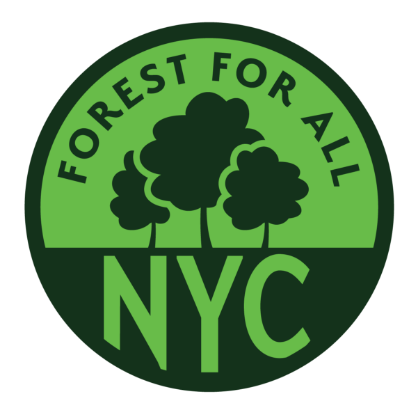by Anne Quito | Oculus
New York City exists in the imagination as a concrete jungle. But walk several blocks in any direction, and you’ll soon discover a thriving green infrastructure of oaks, elms, maples, sweetgums, and poplars amid skyscrapers and other buildings. New York City’s urban canopy has, in fact, grown to 44,500 acres or the equivalent of 7 million trees, due largely to the success of MillionTreesNYC, an ambitious program launched in 2007 that dramatically increased the city’s tree population in a matter of eight years.
Jennifer Greenfeld, an assistant commissioner at the NYC Department of Parks & Recreation who oversaw MillionTreesNYC, explains that the city considers trees as vital infrastructure, not unlike the roads, tunnels, and electrical grids that it manages and maintains. “We view trees as a public service—there’s no question,” she says. “We invest in trees; we put dollar values on them so people understand what they contribute.”
Beyond beautifying streets, a vital tree population brings myriad benefits. Trees absorb carbon dioxide and stormwater; they offer food and habitat for birds, squirrels, and other wildlife. A single shady tree can lower annual energy bills in neighboring houses by $50 because it cools down surrounding areas naturally. And, crucial to a bustling metropolis, trees serve as a sound barrier, blocking the cacophony of street traffic.
During the height of the pandemic, the parks department launched a campaign that underscored how trees improve mental well-being. It installed hundreds of signs that read “It’s okay to hug me” on tree trunks. “I think that really spoke to people,” says Greenfeld, noting that her department received many photos and messages revealing how people found solace in greenery during the darkest of times.
According to Greenfeld, New York City considers the investment in fostering its urban canopy as a climate-change mitigation strategy, where a concentration of healthy, leafy trees can serve as a shield from extreme heat.
Though New York’s tree canopy has improved, the distribution of trees across the five boroughs needs to be more equitable, explains Emily Nobel Maxwell, The Nature Conservancy’s New York-based cities director. “We see a tendency for there to be less canopy cover in low-income communities and communities of color,” says Maxwell, explaining that a history of discriminatory practices like redlining, which led to decades of disinvestment in certain areas, is partly to blame. For instance, according to a recent study by The Nature Conservancy and the New York Environmental Justice Alliance, the largely Black neighborhoods of Hunts Point and Longwood in the Bronx have only about 8% tree coverage, the lowest in the entire city.
A new 50-member coalition called Forests for All NYC, which includes The Nature Conservancy, aims to address this inequity. The group has published a comprehensive report about New York’s tree infrastructure, and has created a plan to increase the number of trees in key neighborhoods. “We really want to see the city commit to 30% canopy by 2035, because we think that will make a tremendous difference in the lives of New Yorkers,” says Maxwell. “Million Trees was an incredible initiative. The fact that New York City was able to plant a million trees in eight years should give us confidence that we can set and achieve big goals.”
Maxwell and Greenfeld say architects and designers can also help improve the urban canopy by saving mature trees in their building sites. “Think about trees early and often,” Greenfeld advises. Trees, she points out, are the only piece of infrastructure that appreciates in value over time. “A tree has more value the larger it gets, because of its beauty, its shade—it’s a great investment.”
Apart from increasing the number of trees, the parks department and Forests for All also champion the idea of diversifying the species of trees throughout the city. Diversity ultimately means resilience, explains Greenfeld. “We were the first place to experience the infestation of the Asian long-horned beetle, which hit maples, ashes, and elms. Now we’re battling the emerald ash borer,” she says. “We’ve learned we need to diversify for a host of reasons; long-term health is based on diversification.”
“We don’t want to have monocultures,” Maxwell adds. “We want an urban forest that is very diverse from a species perspective, from an age perspective, and from a distribution perspective. This city has a tremendously diverse urban forest, and it also has a tremendously diverse population of people. The intersection of those kinds of diversity is the most beautiful part of our city.”
Original story here.
